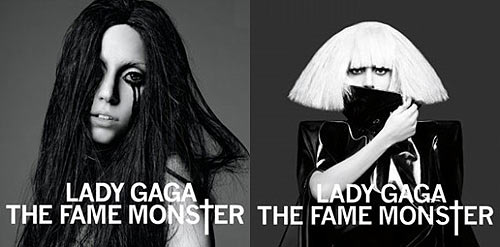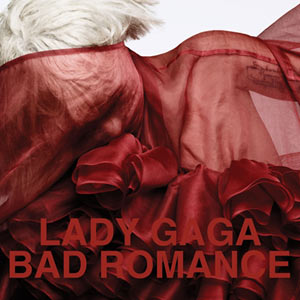



Not to mention her unorthodox performances. During a recent awards show, the audience watched a blood-soaked Gaga die on stage:
3. Her music videos are out of this world. In the eight minute mini-movie for “Paparazzi”, Gaga speaks Swedish, busts out some wheelchair choreography, and kills her lover while wearing a Minnie Mouse-inspired outfit. As if that wasn’t great enough, her latest video goes even further with vampire pods, latex body suits, a creepy cat without fur, and a case of arson ignited by a pair of fire-spitting breasts. Watch the sparks fly below:
4. Even Grace Coddington (the lovable Creative Director of Vogue) and the perpetually unimpressed Anna Wintour approve. They asked Gaga to play the witch in a Hansel and Gretel photo-shoot shot by Annie Liebowitz and styled by Marc Jacobs.


5. In an increasingly homophobic culture, she uses her platform to come out in support of her friends and fans who happen to be gay. From thanking “God and the gays” when receiving awards to screaming “ARE YOU LISTENING?!” at the Obama administration during a speech at this October’s National Equality March, she’s a high-profile activist for a movement that desperately needs every one it can get.
Have I indoctrinated you yet? Good.
Like her idol Andy Warhol, Gaga uses her persona as a critique of pop culture and fame whoredom. This was most evident on her first album The Fame, that brimmed with songs all about the artificial: money, celebrity, and the paparazzi. A mere year later, Lady Gaga has departed from these subjects for something meatier with the release of The Fame Monster, a concept album about fear-mongering monsters that lurk in the dark side of fame.
On “Bad Romance,” the ’80s inflected first single, Gaga chronicles her “fear of love monster.” “I want your ugly, I want your disease,” she growls, describing the desire to consume all the dark and disgusting parts of one’s lover. Later in the song, Gaga indulges in her knack for layering earnest confession with humorous wordplay: She sings “I want your Psycho, your Vertigo shtick, want you in my Rear Window,” turning the titles of classic Hitchcock movies into sexual innuendo.
The album carries on with “Alejandro,” a Latin-based valediction to former lovers that sounds like the bastard child of Madonna’s “La Isla Bonita” and ABBA’s “Fernando.” Gaga uses the song to bid adieu to Alejandro, Fernando, Roberto, and all the other stand-ins for lust from her past. Other fun tracks are “Monster,” a song about predatory men who eat the hearts and brains of their prey, and “Telephone,” a purely pop gem featuring Beyonce that’s all about trading your nagging boyfriend’s telephone calls for the dance floor.
The only place on The Fame Monster that Gaga falters is during the lone lo-tempo track, “Speechless.” Written as a plea for her ailing father to get a heart operation, the song strips away her signature tongue-in-cheek pep for a more solemn tone. What results is a perfectly fine ballad, but a formulaic one that could have belonged to anyone.
On the other hand, “Dance in the Dark,” the album’s most interesting song, is definitively hers and hers alone. The track borrows industrial/Goth beats from Eastern Europe and culminates in a spoken name-drop of gay-icons and dead divas: Marilyn Monroe, Judy Garland, Sylvia Plath, JonBenet Ramsey (!!!), and Princess Diana. If there’s one thing the girl loves, it’s cultural icons and, judging by the countless Gaga impersonators this Halloween, she’s already become one.
Speaking about her upcoming tour titled “The Monster Ball,” Lady Gaga says fans can expect “an exorcism” and “a post-apocalyptic dance party.” San Franciscans will get a chance to exorcise their own personal monsters at the Bill Graham Civic Auditorium on December 13 and 14, 2009. The Fame Monster is out now.
 Now, I know that you’re skeptical, but trust me on this one: Lady Gaga is not just another vacuous fembot on her way to a life of sex tapes and publicity stunts; she’s of a different breed. Here are five reasons why Lady Gaga is cooler than you think she is:
Now, I know that you’re skeptical, but trust me on this one: Lady Gaga is not just another vacuous fembot on her way to a life of sex tapes and publicity stunts; she’s of a different breed. Here are five reasons why Lady Gaga is cooler than you think she is:









